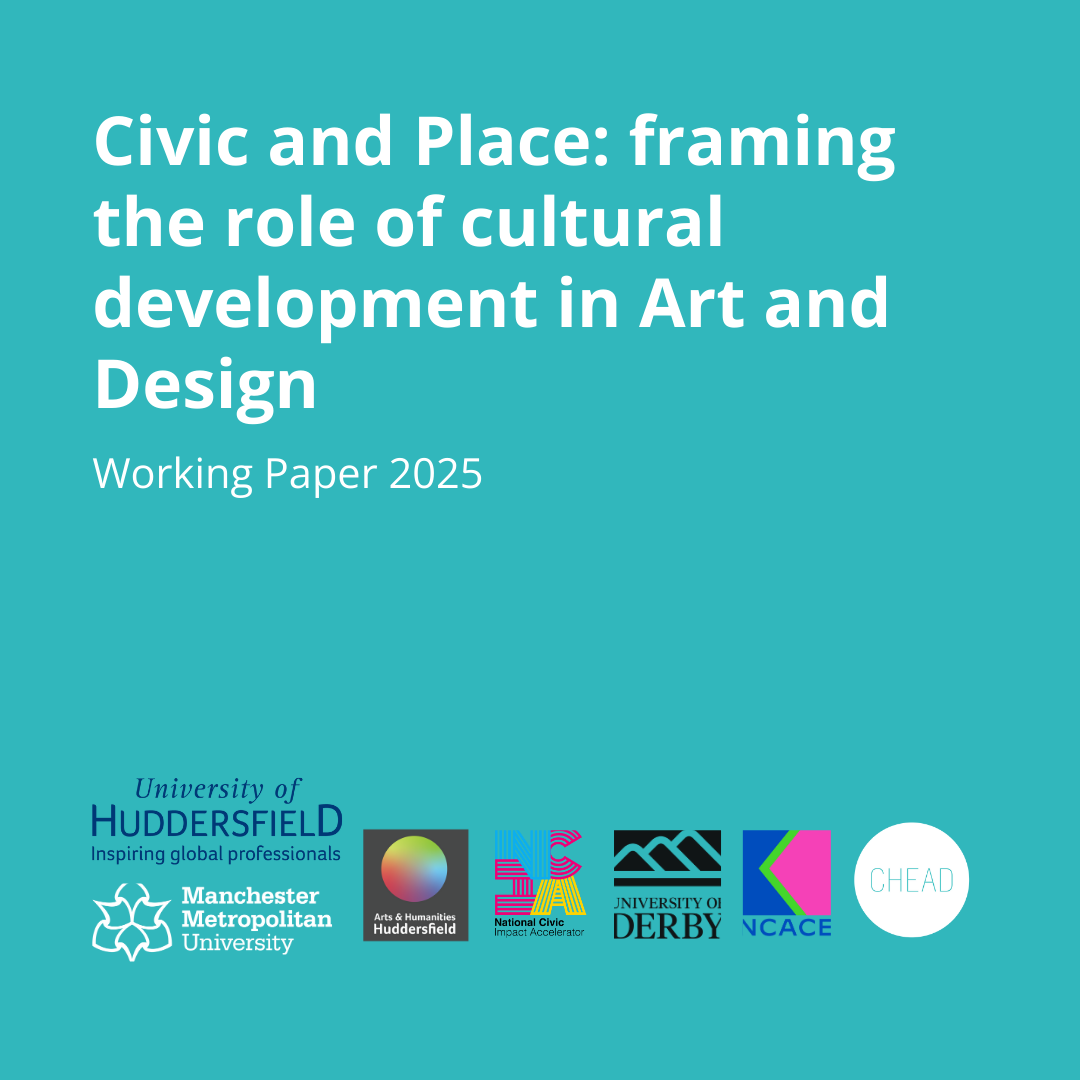CHEAD is the association of educational institutions with degree or postgraduate provision in art, design, creative media and related disciplines.

CHEAD provides a voice for and on behalf of higher education art and design in the UK four nations advancing knowledge and understanding in the sector and promoting the sector's interests to others.
This manifesto sets our eight asks, eight societal benefits and eight economic benefits of investing in arts education in schools, colleges, and higher education.

CHEAD 2026 Annual Conference
Navigating Change: A Creative Leader's Role
Teesside University

Civic and Place: framing the role of cultural development in Art and Design Working Paper
We are please to launch a working paper arising from the event in April 2025.

Ve Dewey on CHEAD's New Creative Leadership Programme
Ve Dewey talks to Catherine Glover, keynote speaker on the Programme and Assistant Professor at Northumbria University, about vision, collaborative shaping, and, in her view, what Higher Education needs now.

The Future-Proof Leader Cultivating Unshakeable Confidence for Strategic Impact
Confidence isn’t innate – it’s a leadership capability that can be built through practice and mindset.
Our Members / View all members








































































